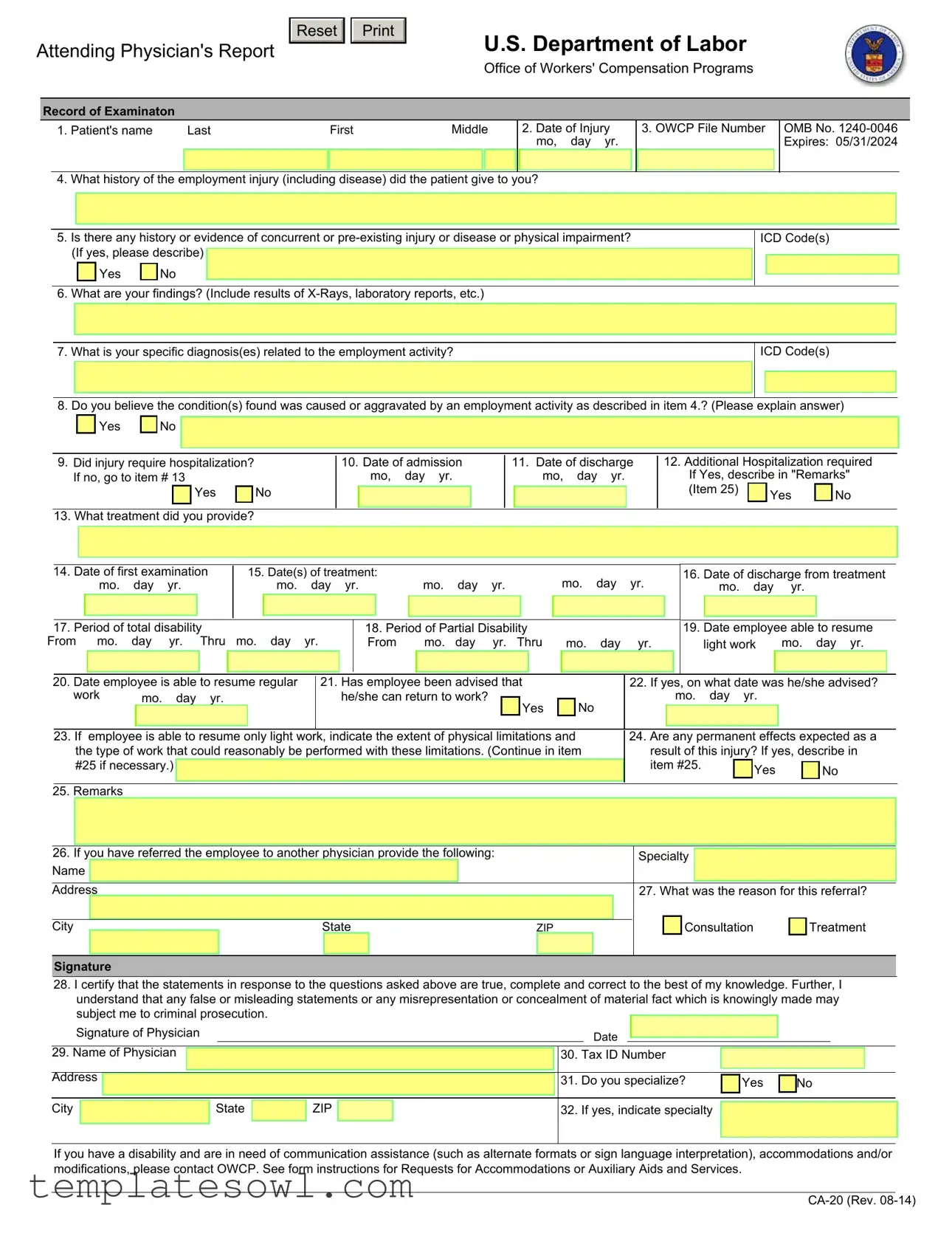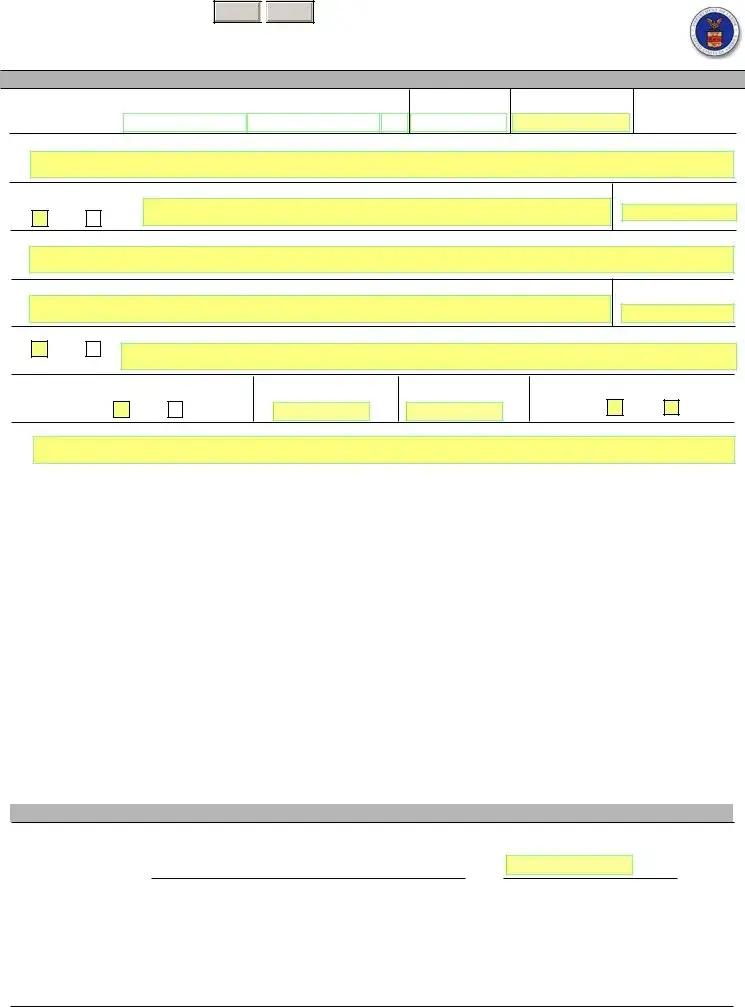What is the CA-20 form used for?
The CA-20 form, or Attending Physician's Report, is used in the context of worker's compensation claims in the United States. It provides essential medical information about an injured employee, detailing the extent of their injury, treatment, and whether the condition resulted from employment activities. This form aids in assessing eligibility for compensation benefits.
Who needs to complete the CA-20 form?
The CA-20 form must be completed by the attending physician of the injured employee. This physician should have a thorough understanding of the employee's medical condition, treatment history, and the impact of the injury on the employee’s ability to work.
What information is required on the CA-20 form?
The form includes multiple sections that collect various details. Key information includes the patient's name, date of injury, medical findings, diagnosis related to the injury, treatment provided, and any periods of disability. The physician is also required to certify that the information provided is true and complete.
How is the CA-20 form submitted?
The completed CA-20 form should be sent to the Office of Workers’ Compensation Programs (OWCP) along with the physician's bill for services rendered. The address for submission is included on the form itself, ensuring timely processing of the claim.
Is a CA-20 form required for all worker’s compensation claims?
A CA-20 form is specifically necessary for claims substantiated by medical evidence demonstrating a disability linked to work-related activities. If a claimant has already submitted a narrative medical report or a CA-16 form within the past 10 days, they may not need to submit the CA-20.
What happens if the information on the CA-20 form is inaccurate?
If inaccuracies are found, it can lead to delays in processing the claim or even denial of benefits. The physician completing the form should ensure that all information is correct and truthful to avoid potential criminal prosecution for false statements.
Can a physician provide additional documentation apart from the CA-20 form?
Yes, a physician may also provide a narrative medical report in addition to the CA-20 form. This is especially useful in describing the relationship between the employee’s work and their injury in greater detail, which could aid in the claims process.
What information is protected under the Privacy Act when submitting the CA-20 form?
Personal information collected on the CA-20 form is protected under the Privacy Act of 1974. This means information gathered will only be used to determine eligibility for compensation and may be shared with relevant parties to process the claim, such as healthcare providers and government agencies.
How does one request accommodations related to the CA-20 form?
Individuals needing communication assistance or accommodations due to a disability should contact the OWCP office or their claims examiner. Options may include receiving documents in alternate formats or obtaining sign language interpretation services.




